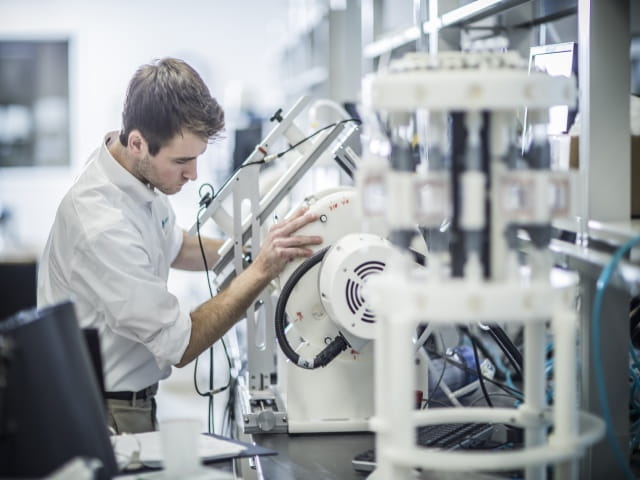Custom Load Monitoring for Multi-Specimen Medical Device Tests
As medical devices are being designed for use in new areas within the body, they may experience loading that is more complex than in traditional indications. For example, in the “old days” of coronary stent testing, we only needed to focus on generating a radial strain in the straight mock artery to simulate in vivo loading. Newer devices such as stented valves and grafts experience more complex loading.
The Challenge
An Abdominal Aortic Aneurysm (AAA) repair device may require a fixation means that sees a completely different type of load than the radial loading the tubular device geometry experiences. To simulate the different loading, a completely different test setup may be required. Likewise, new materials, material treatments and finishing may be used in a new device design, and a method for qualifying the new selections which does not involve full device fabrication is useful.
Oftentimes, a representative piece of the component such as a strut or sample coupon can be tested to rapidly determine the levels at which fatigue failure may occur. Furthermore, to obtain statistically significant sample sizes with a confidence level of 95% and a reliability of 90%, a minimum sample size of 29 is required. While an ideal scenario would be to test each specimen on its own individual tester, the use of 29 testers for one set of samples would be cost-prohibitive.
The Solution
Our "Spider Fixture" is a comprehensive solution to multi-specimen tension and compression tests that require a significant sample size. The fixture includes separate load cells with signal conditioners and data acquisition that are integrated into the tester control software. This means that load signals for each specimen are acquired along with the applied displacement to the sample. The advantage of the load cell monitoring (vs. no load monitoring) is that the applied load is continuously monitored and recorded throughout the test. Some of the key benefits of individual sample load cell monitoring include:
- If a fatigue failure occurs, the cycle count is recorded so you know exactly the cycle count for each sample failure
- The tester can be set up to automatically stop so that visual or other examination of the failure can take place
- A new specimen can be installed to increase testing throughput.
- Individual sample properties can be obtained.
- Different mean loads can be entered.
Element’s significant experience working with multi-specimen fixtures and high throughput testing has helped identify potential pitfalls and how to avoid them. For example, we have developed fixture designs that minimize the loading error from sample to sample through fixture bending and has quantified these errors. In other words, not all multi-specimen fixture designs are equal.
Another pitfall is the difficulty of removing and replacing specimens and getting them dialed back into the same loading. We accomplish this by providing an individual preload adjustment mechanism for each specimen. Several fixture configurations are available, and the selection of a particular configuration is dependent on the sample geometry and size. The sample number that can be accommodated is either 6, 12 or 15.
The fixture includes custom specimen grips and can be adjusted for samples of various lengths. The fixture is designed to be used in a simulated physiological environment such as 37°C Phosphate Buffered Saline.
Conclusion
The many benefits of multi-specimen testing have led the development of multi-specimen fixture designs for many different applications. Our engineers have significant experience working with high throughput testing and can help you avoid the pitfalls involved. After decades of experience testing many types of medical devices, Element experts have learned to adapt the various test instruments in our inventory to virtually any test application.
Find related Resources




